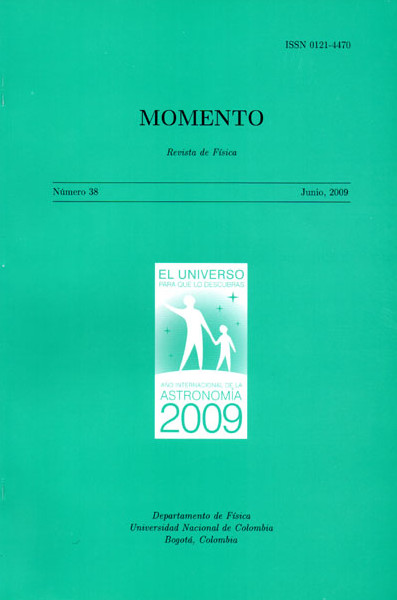Superconductores de alta Temperatura Crítica a base de Hierro
Keywords:
LaO1-xFxFeAs, materiales superconductores, alta temperatura crítica. (es)LaO1-xFxFeAs, superconducting materials, high critical temperature. (en)
Downloads
El descubrimiento a principios de 2008 de una nueva familia superconductora con una Tc~26K en un compuesto de hierro y dopado con flúor, LaO1-xFxFeAs, ha revivido el interés en la búsqueda de materiales superconductores con alta temperatura critica. Su descubrimiento ha propiciado un acelerado estudio de sus propiedades superconductoras y de muchas otras propiedades físicas, dando como resultado la obtención nuevos compuestos con temperaturas críticas entre 26 - 55 K. En este artículo se pretende hacer un resumen de las principales características fisicoquímicas de dicha familia y compuestos relacionados.
The discovery in early 2008 of a new family of superconductors with a Tc~26K in an iron compound and fluorine doped, LaO1-xFxFeAs, has revived interest in the search for superconducting materials with high critical temperature. The discovery has led to an accelerated study of superconducting properties and many other physical properties, resulting in obtaining new compounds with critical temperatures between 26 - 55 K. In this article it is intended to summarize the main physical and chemist characteristics of this family and related compounds.
How to Cite
APA
ACM
ACS
ABNT
Chicago
Harvard
IEEE
MLA
Turabian
Vancouver
Download Citation
Article abstract page views
Downloads
License
Those authors who have publications with this journal, accept the following terms:
a. The authors will retain their copyright and will guarantee the publication of the first publication of their work, which will be subject to the Attribution-SinDerivar 4.0 International Creative Commons Attribution License that permits redistribution, commercial or non-commercial, As long as the Work circulates intact and unchanged, where it indicates its author and its first publication in this magazine.
b. Authors are encouraged to disseminate their work through the Internet (eg in institutional telematic files or on their website) before and during the sending process, which can produce interesting exchanges and increase appointments of the published work.



















